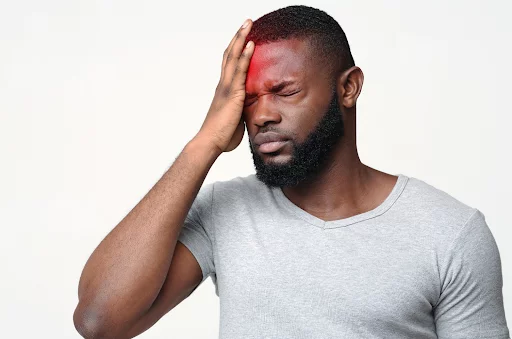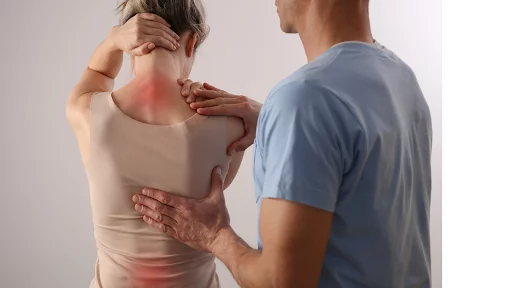Concussions are a type of traumatic brain injury (TBI) caused by a blow, bump, or jolt to the head. This trauma causes the head and brain to move rapidly back and forth, and such sudden movement can create chemical changes in the brain and even damage brain cells.
Falls, motor vehicle accidents, and contact sports injuries are all common causes of concussions. For individuals with acute concessions, symptoms will typically resolve on their own in 7-10 days. However, if symptoms have not resolved after ten days, you may need concussion rehabilitation. Concussion physical therapy can help relieve headaches, neck pain, and muscle tension and improve balance, stability, gait, and mood.
Keep reading to learn more about the benefits of physical therapy concussion rehabilitation for post-concussion syndrome (PCS).
Concussion Symptoms
Symptoms of a concussion usually appear soon after an injury occurs, although it can take hours or even days for symptoms to start.
These are the most common concussion symptoms:
- Headache or feeling pressure in the head
- Nausea or vomiting
- Balance problems/dizziness
- Double vision
- Feeling slugging, groggy, or hazy
- Confusion
- Memory loss
- Bothered by light or noise
- Difficulty sleeping
- Eye fatigue and discomfort
As mentioned above, most concussion symptoms resolve on their own without intervention. However, for a small percentage of people, concussion symptoms may linger for months or even years after the initial trauma. This is called post-concussion syndrome or persistent post-concussion symptoms (PPCS).
Treating PCS and PPCS requires a comprehensive exam and an individualized treatment approach. If you experienced a concussion and are still suffering from these debilitating symptoms after the fact, concussion physical therapy can help.

How Can Physical Therapy Help With Concussions?
Physical therapists play an important role in concussion rehabilitation for individuals with post-concussion syndrome.
Following a concussion, individuals are often told to rest and do nothing to aggravate the symptoms until they go away. However, this approach doesn’t always work, especially for persistent symptoms. Recent studies actually suggest that a more active approach focusing on physical therapy is a more effective treatment option.
While rest is still an important part of recovery, physical therapists can offer supervised concussion rehabilitation and monitor progress and recovery. Physical therapists can also help patients make return-to-participation decisions, such as returning to professional sports.
Physical therapy and aerobic training improve blood flow and oxygenation, which is beneficial for healing, especially regarding brain metabolism. Exercise can also help regulate the autonomic nervous system (ANS), which is often disrupted after a concussion. Further, physical therapists can teach their concussed patients how to safely return to normal daily activities and remain physically active while avoiding reinjury and aggravating symptoms.
Concussion Rehabilitation Treats a Variety of Symptoms
In addition to monitoring concussion progress and recovery, physical therapists can also treat and manage various symptoms as part of concussion rehabilitation. Concussions often result in neck and shoulder pain, vision problems, and balance issues. Fortunately, concussion physical therapists are adept at treating these issues in their patients.

Neck and Shoulder Pain
Concussions frequently result in neck and shoulder pain, especially from a motor vehicle accident or a hard impact from a tackle during a football game. Potential symptoms include loss of range of motion in the neck, headaches at the base of the skull, and numbness or a tingling sensation in the arms.
At Mid-County Physical Therapy, our neck and back physical therapy program will help alleviate your post-accident pain and allow you to resume your everyday physical activities quickly.
Vision Problems and Headaches
Over half of concussion patients experience vision-related problems. In these circumstances, vision therapy works to get the visual system to correct itself rather than compensate for vision problems.
Neck pain and brain injuries can cause frequent headaches and migraines, which can be treated with physical therapy as part of concussion rehabilitation. Migraine physical therapy often focuses on stretching and improving posture, soft tissue mobilization, and education on easing muscles and lessening tension in your body.
Poor Balance and Dizziness
In most instances of head trauma, loss of balance and feeling dizzy are to be expected. Symptoms are usually made worse when patients change positions, so rest is often the first recommended course of treatment post-concussion.
Vestibular rehabilitation is a type of physical therapy that specifically targets balance issues, such as headaches and dizziness. Your physical therapist will walk you through exercises that practice your balance.
Concussion Physical Therapy at Mid-County Physical Therapy
Physical therapy is one part of a multidisciplinary approach to treating concussions and the injuries that resulted in brain trauma. Even when concussion symptoms are gone, you may still feel the lingering effects of back and muscle pain or other ailments related to your injury.
No matter your symptoms, the skilled team at Mid-County Physical therapy will provide you with a customized concussion rehabilitation plan that specifically targets your symptoms.
Are you ready to get back to normal and live without pain and discomfort? Contact Mid-County Physical Therapy today to make an appointment at our Woodbridge, VA, office.


